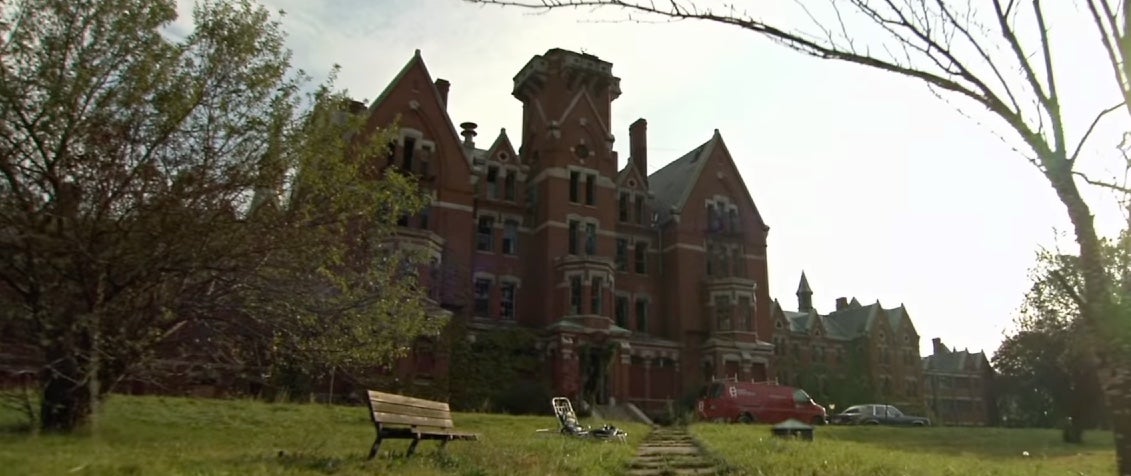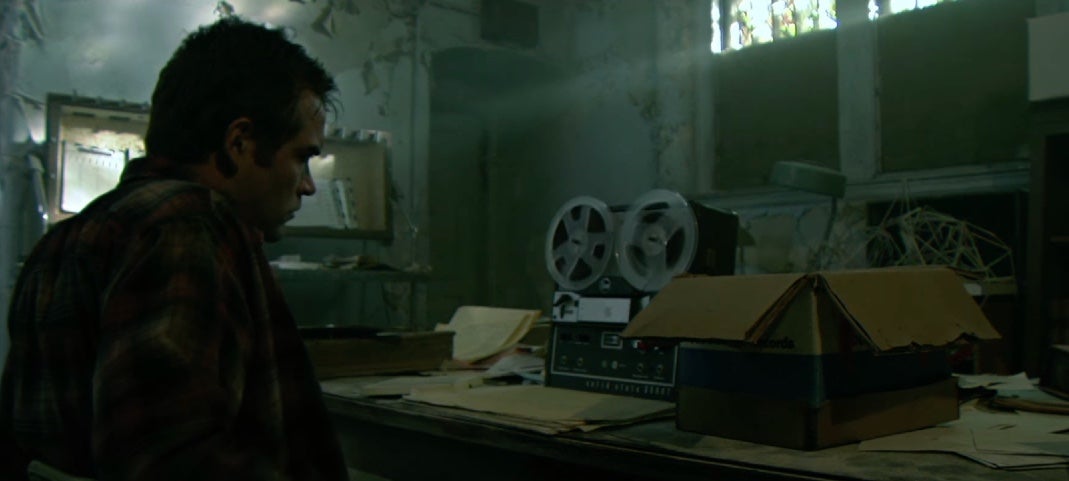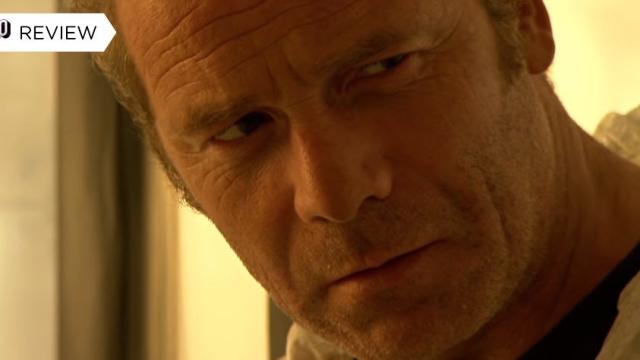Financial troubles, job stress, and a fraught home life would be enough to push anyone to the edge, but as Gordon Fleming (Westworld’s Peter Mullan) discovers, there’s nothing like a (probably haunted) abandoned psychiatric hospital to really turn the screws.
That’s where we find Gordon at the start of director Brad Anderson’s Session 9, a low-budget nail-biter that came out in 2001 but has a timeless feel, even with the presence of early-2000s TV star David Caruso, immortalised forever in you-know-which meme involving sunglasses. (Anderson, who has steadily worked in movies and TV since, got his most recent credit directing an episode of James Gunn’s Peacemaker.) It’s true that a lot of the heavy atmospheric lifting comes ready-made with the film’s setting — the hulking Danvers State Hospital, also known as the “Danvers Lunatic Asylum” — but all that creepy abandonment porn would only go so far, if not for the nuances of character development and tension-building in the script by Anderson and Stephen Gevedon.
“Holy shit, look at this,” Phil (David Caruso) tells Gordon as they drive up to the hospital for the first time, determined to win a much-needed contract for their asbestos-removal business. It feels like the right reaction. Not only is Danvers an intimidating structure, its empty windows and — once they get a look inside — peeling paint, flooded floors, and left-behind medical equipment (along with other evidence of the troubled lives that once dwelled there) suggest deep psychic wounds lingering within its walls, much like the cancer-causing material the men are there to take care of. There’s poison in the air in more ways than one, and it sure doesn’t feel like a place of healing. And as Gordon, Phil, and the rest of the team (Hank, played by Josh Lucas; Jeff, Gordon’s nephew, played by Brendan Sexton III; and Mike, played by co-writer Gevedon) soon find out, its dark history still has the power to reverberate into the present.

No horror-movie fan could watch Session 9 without picking up its references to The Shining — beyond the obvious Very Bad Place Filled With Very Bad Energy, there are little details, like the fact that Gordon’s wife is named Wendy — and that makes the ending less of a surprise than perhaps Anderson intended. Still, the path to that ending still manages to take some unexpected twists. Of course, the decrepit asylum is a horror trope at this point, particularly favoured by found-footage movies as well as TV shows about “real” ghost hunters. That’s why it’s so satisfying that Session 9 strives to bring heft to its story beyond its admittedly spooky as hell backdrop.
Gordon — who’s a new father, so you can add “sleep-deprived” to his list of woes — is the main character, but most everyone gets fleshed out to satisfying effect. Phil is Gordon’s best friend, but they don’t always agree; this is foreshadowed early on when Phil estimates the clean-up job will take at least three weeks, and Gordon says two. (Later, Gordon chases down the Danvers head of public works and insists that they can get the job done in one week — a timetable that nets them the gig but also ratchets up the stress that comes with a loudly ticking clock.) Phil and Hank have beef thanks to Phil’s ex dumping him for the cocky Hank; Jeff’s inexperience may be exasperating at times, but he genuinely wants to do a good job for his uncle; and Mike has fallen into this line of work after dropping out of law school, something he’s recently come to regret. We don’t learn everything about them, but there are no stock characters among the main cast. The performances feel lived-in, and there’s a familiarity between the men that makes their shit-talking sessions, which can teeter on the line between joking and loathing, come across as authentic.
Less dynamic are the security guard and Danvers city official characters, who appear onscreen mostly to unload backstory on the hospital — but it’s much-needed information for the audience. You’re already uneasy just looking at the place, and then you learn “the prefrontal lobotomy was perfected here at Danvers.” (Foreshadowing alert!) Beyond that, Session 9 does take time to discuss the psychiatric methods that would have made Danvers such an unhappy home for its thousands of patients. Mike, in particular, has an interest in Danvers lore, which increases once he discovers a box marked “evidence” in the basement; it’s filled with reel-to-reel tapes chronicling the therapy sessions of a patient with an apparently homicidal variant of Dissociative Identity Disorder. Soon he becomes obsessed with slipping away from his duties so he can listen to them, and the eerily time-warped sounds of “Mary” and her doctor become a key part of the movie’s unsettling soundscape.

At about the three-fourths mark, Session 9 leaps from slow-burn unease — you know something is festering, but you can’t quite put your finger on it — to a rapid-fire gorefest in which everything you’ve just seen is thoroughly explained. It brings a tidy but incredibly grim end to the story, but there’s no sense of catharsis for anyone, least of all the audience. What you do take away from Session 9, even 20-plus years later, is the feeling that while certain locations may be predisposed to facilitating evil, the vulnerable may still encounter it no matter where they go.
Session 9 is now streaming on Shudder.
